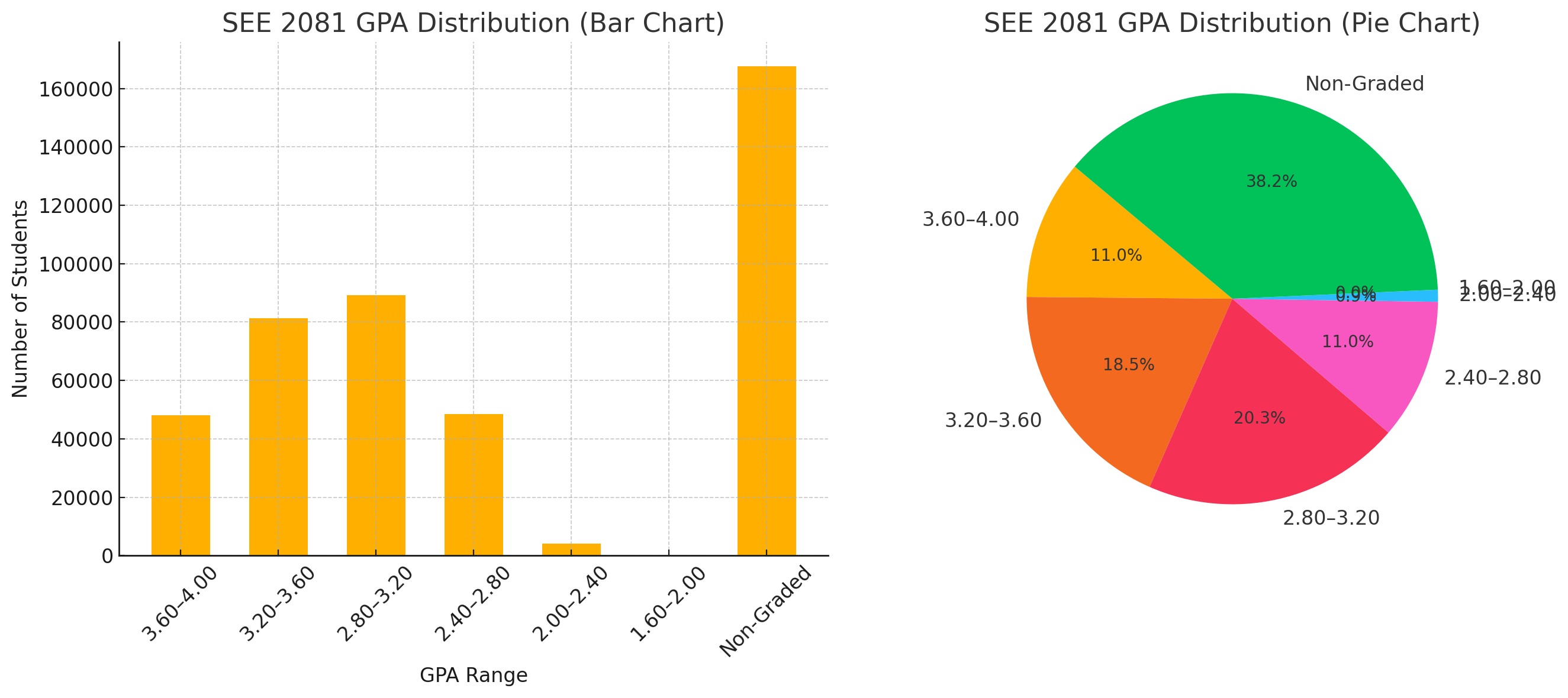
SEE Result 2081 Shows Improvement Compared to the Previous Year
The Secondary Education Examination (SEE) results for the year 2081 have shown a noticeable improvement compared to last year, according to the results published on Friday by the National Examination Board, Examination Control Office, 61.81% of the students passed the SEE 2081 exam.
A total of 438,896 students appeared for the examination. Among them, 271,299 students passed, while 167,597 students were categorized as non-graded, meaning they did not meet the passing standard.
Comparison with Last Year’s Results
This year's results reflect a significant increase in the pass percentage. In the previous year, the pass rate for the SEE stood at 47.86%. The current result has increased by nearly 14 percentage points.
The government had aimed for a pass rate of at least 70% in SEE 2081. If the percentage of students passing the grade improvement exams is also included, the total achievement could exceed the government's initial target.
Experts Respond to the Improvement
Educational experts have welcomed the improvement in results as a positive development. Prof. Dr. Bal Chandra Luitel, an education expert and Dean at Kathmandu University School of Education, acknowledged the result as a step forward.
However, he emphasized the need to shift the current focus from grades alone to actual learning achievements. He stated:
“While the improvement compared to last year is clear, this should be viewed as an opportunity to invest resources and efforts into improving the results of Grade 12, which is considered the final step in school education.”
Insights from the Examination Board
During the official result announcement, Board Chairperson Dr. Mahashram Sharma stated that the disappointing result last year had drawn attention from stakeholders across all levels—from local to federal authorities.
He shared:
“Last year, more than half of the students failed. That prompted us to analyze the results thoroughly. We studied why students were weak in certain subjects and implemented targeted strategies. We mobilized teachers and resources accordingly, which has led to this year’s improved outcome.”
Grading System and Requirements
Students who passed the SEE are categorized into graded groups by the board. To fall under the graded category, students must score:
-
A minimum of 35% in each subject’s theoretical component
-
A minimum of 40% in internal assessments
Specifically:
-
In theoretical subjects worth 75 marks, a student must secure at least 27 marks
-
In internal evaluations worth 25 marks, a student must score at least 10 marks
This grading provision was introduced last year. As a result, many students did not pass then, which influenced a shift in study habits and contributed to the better results this year, according to the board's assessment.
GPA Group Breakdown of SEE 2081 Results

A total of 438,896 students participated in the examination. Based on their GPA scores, the board categorized students into seven distinct groups:
-
GPA 3.60 to 4.00 – 48,177 students
-
GPA 3.20 to less than 3.60 – 81,385 students
-
GPA 2.80 to less than 3.20 – 89,124 students
-
GPA 2.40 to less than 2.80 – 48,479 students
-
GPA 2.00 to less than 2.40 – 4,126 students
-
GPA 1.60 to less than 2.00 – 8 students
-
Non-Graded (NG) – 167,597 students


